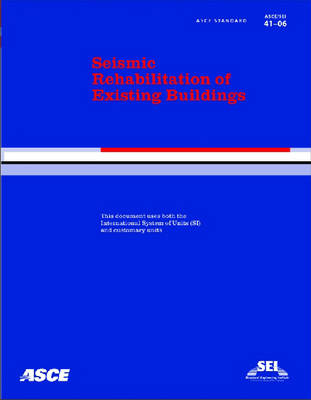Standards ASCE/SEI 41-06
1 total work
Seismic Rehabilitation of Existing Buildings ASCE/SEI 41-06
by American Society of Civil Engineers
Published 1 May 2007
ASCE/SEI Standard 41-06, Seismic Rehabilitation of Existing Buildings, is the latest generation of performance-based seismic rehabilitation methodology. This new national consensus standard was developed from the FEMA 356, Prestandard and Commentary for the Seismic Rehabilitation of Buildings, which served as a starting point for the formal standard development process. ASCE/SEI Standard 41-06 represents state-of-the-art knowledge in earthquake engineering and is a valuable tool for the structural engineering profession to improve building performance in future earthquakes.It includes significant improvements in current understanding of building behavior in earthquakes, such as: improved C-coefficients for calculation of the pseudo-lateral force and target displacement based on recommendations in FEMA 440; comprehensive soil-structure interaction provisions including kinematic effects and foundation damping effects; revised acceptance criteria for steel moment frames to reflect final conclusions of the SAC Joint Venture research; expanded acceptance criteria for concentrically braced frames defined as a function of brace slenderness, compactness and level of connection detailing; and, updated nonstructural provisions to be consistent with current NEHRP Provisions for new buildings. ASCE/SEI Standard 41-06 is a valuable tool for structural engineers and the public for improving seismic performance of existing buildings. The completion of the new Standard represents a considerable advancement for the engineering community.
